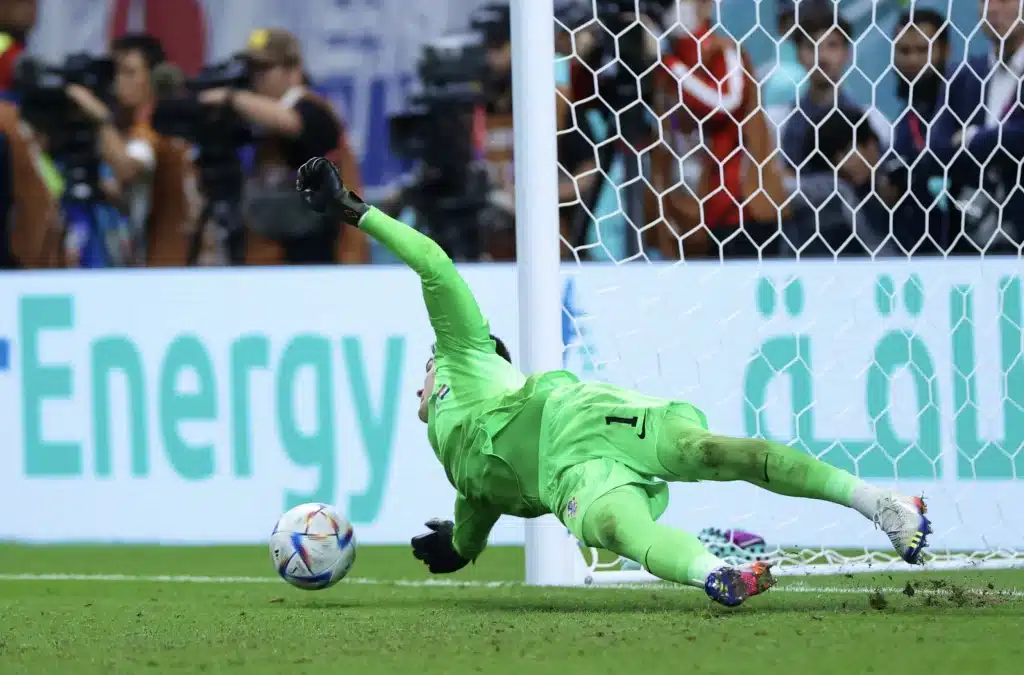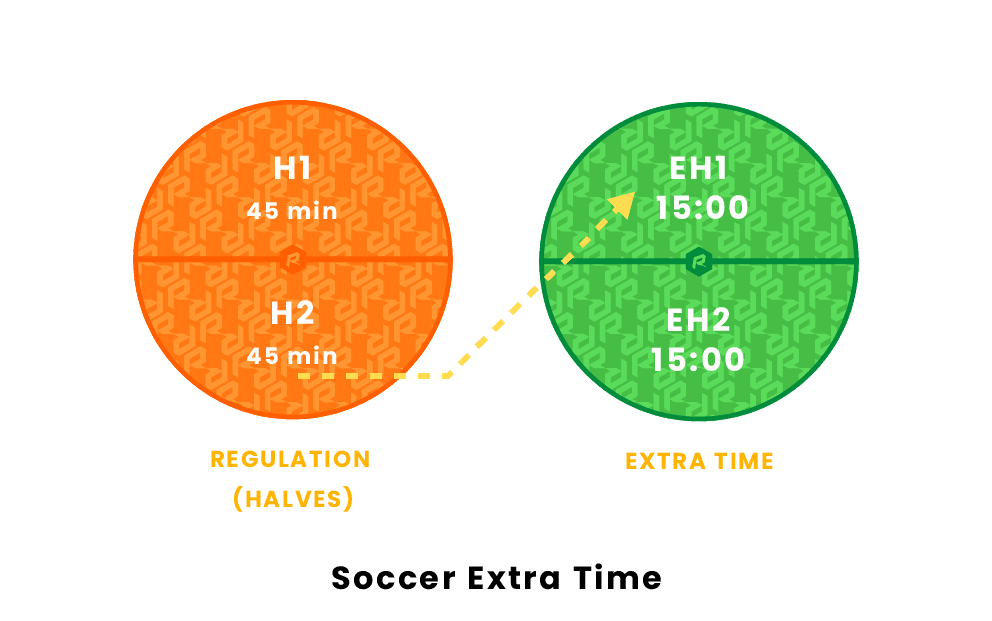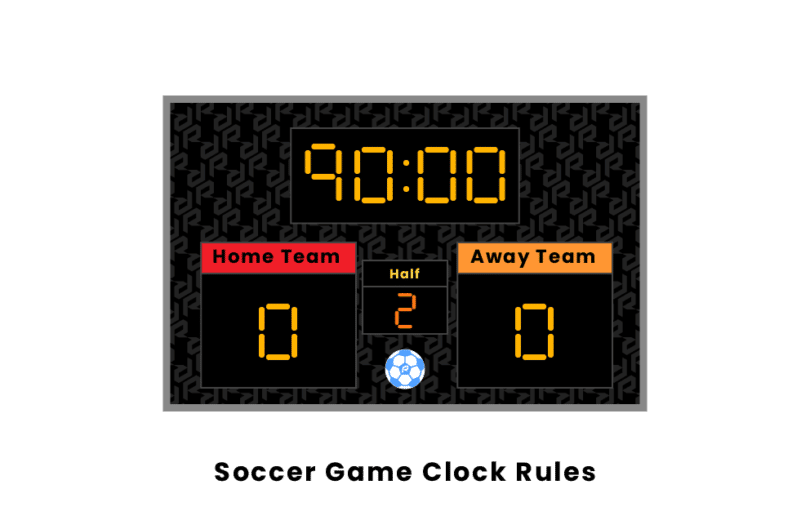What is a soccer game?
Soccer, also known as football, is a sport played between two teams of eleven players each. The objective of the game is to score goals by kicking or heading a ball into the opposing team’s goalpost. The team with the most goals at the end of the game is declared the winner.
The game is played on a rectangular field with a goal at each end, and the ball is advanced primarily by kicking or heading it. The rules of the game are set by the International Football Association Board (IFAB) and FIFA. It is one of the most popular sports in the world, with billions of fans and millions of players.
RELATED: Exclusive Manchester United takeover offers imminent from Middle East Asia and the US
How long does extra time last?
Extra time, also known as injury time, is added to the end of a soccer game to make up for a lost time during the game. The length of extra time can vary, but in most professional matches, it lasts for two 15-minute halves. If the game is still tied at the end of extra time, the game will then be decided by a penalty shootout.

It’s important to note that the time added to extra time can vary depending on the competition or the league. Some leagues may have different rules for the length of extra time.
How long is extra time before the penalty?
Extra time, also known as injury time, is added to the end of a soccer game to make up for a lost time during the game. If the game is tied at the end of regulation time, the game may go into extra time. In most professional matches, extra time lasts for two 15-minute halves. If the game is still tied at the end of extra time, the game will then be decided by a penalty shootout.

It’s important to note that the time added to extra time can vary depending on the competition or the league. Some leagues may have different rules for the length of extra time and may have different duration of extra time before the penalty.
How long is an extra time break in soccer?
In most professional matches, there is a short break between the end of regulation time and the start of extra time. This break is typically around 2-3 minutes. It’s intended for the players to catch their breath, regroup, and make any necessary tactical adjustments before the start of the extra time.
During the extra time, there is also a short break between the first and second 15-minutes halves. This break is also around 2-3 minutes, this time is intended for players to catch their breath, make adjustments, and hydrate.
It’s important to note that the time of the break may vary depending on the competition or league. Some leagues may have different rules for the length of the break.
RELATED: La Liga Top Scorers 2022/2023 – Top Goal Scorer
How long is a soccer game with extra time and penalties?
A soccer game with extra time and penalties can last up to 120 minutes. A standard soccer game lasts for 90 minutes, divided into two 45-minute halves with a 15-minute halftime break. If the game is tied at the end of regulation time, the game may go into extra time, which consists of two 15-minute halves. If the game is still tied at the end of extra time, the game will be decided by a penalty shootout.

A penalty shootout typically takes around 15-20 minutes to complete, depending on the number of rounds required to determine the winner.
So in total, a soccer game with extra time and penalties can last for around 120 minutes, but it can vary depending on the specific circumstances of the match.
How do penalties work after extra time?
The process for a penalty shootout is as follows:
- The teams decide by coin toss who will take the first penalty kick.
- Five players from each team take turns attempting to score from the penalty spot.
- The order of players taking the penalty kicks is determined before the shootout begins.
- The teams take turns taking penalty kicks, with the team that did not take the first penalty kick-starting the shootout.
- If at the end of the five penalty kicks, the teams are still tied, the shootout continues with players who have not yet taken a penalty kick, and it goes on until one team scores more goals than the other.
It’s important to note that, depending on the competition or league, some may have different rules or regulations for the penalty shootout, such as the number of rounds, and the number of players that can take penalties.
How does stoppage time work?
Stoppage time, also known as injury time, is additional time added to the end of each half of a soccer game to make up for a lost time during the game. The amount of stoppage time is determined by the referee and is added to the end of the second half.
The reasons for adding stoppage time can include:
- Injuries, substitutions, or other delays.
- Time wasting by the team that is leading.
- Extended periods of time when the ball is not in play.
The length of stoppage time can vary, but it is typically around 2-5 minutes. The referee will signal the amount of stoppage time by holding up a board with the number of minutes on it, and it’s also announced by the stadium speaker or by the fourth official.

It’s important to note that the rules for stoppage time can vary depending on the competition or league. Some leagues may have different rules for the length of stoppage time or the way it is determined.
RELATED: What time is the Super Bowl 2023?
Table of Contents
How long between 90 minutes and extra time?
The break between the end of regulation time (90 minutes) and the start of extra time is typically around 2-3 minutes. It’s intended for the players to catch their breath, regroup, and make any necessary tactical adjustments before the start of the extra time. The coach may also want to make some substitutions during this break.
During this break, the referee will check with the fourth official the amount of time lost during the game, and then add that time as stoppage time. Once the referee has added the necessary stoppage time, they will blow their whistle to signal the start of extra time. The extra time consists of two 15-minute halves and the same process of stoppage time is applied at the end of each half of extra time.
It’s important to note that the time of the break may vary depending on the competition or league. Some leagues may have different rules for the length of the break or the way it is determined.
How long is extra time after 90 minutes?
Extra time, also known as injury time, is added to the end of a soccer game to make up for a lost time during the game. If the game is tied at the end of regulation time (90 minutes), the game may go into extra time. In most professional matches, extra time lasts for two 15-minute halves, so in total, the extra time is 30 minutes.
It’s important to note that the time added to extra time can vary depending on the competition or the league. Some leagues may have different rules for the length of extra time, and some competitions may have different durations or may not have extra time at all and go directly to the penalties.
What happens after 11 penalties?
If a penalty shootout is tied after each team has taken five penalties, the shootout will continue with a sudden-death format, where each team will take one penalty at a time until one team scores and the other team misses. This process is repeated until one team has scored more goals than the other team after an equal number of kicks.
It’s important to note that depending on the competition or league, some may have different rules or regulations for the penalty shootout, such as the number of rounds, and the number of players that can take penalties. Some competitions may have different rules for the sudden death format, such as a different number of penalties required to win or a different format altogether.
Also, it’s worth mentioning that some competitions may have different rules for the sudden death format, for example, in some competitions, the first team to score wins, and in some, the team that scores more goals wins.
What is the longest penalty in football?
The longest penalty in football history was taken by the Chilean player Carlos Caszely in the 1975 Copa Libertadores final. He took the penalty kick from the center of the field, which was located more than 90 meters (98.5 yards) away from the goal line. He ran for about 40 meters (44 yards) before taking the shot and scoring the goal. This goal was scored from the longest distance in a professional match.

It’s worth noting that such penalties are very rare, and it’s not allowed in most competitions, as the rules of football state that a penalty kick must be taken within a specific area, generally around 12 yards from the goal line.
RELATED: Premier League Standings 2022/2023
How does extra time work in UEFA?
In UEFA competitions, extra time is used to determine a winner in the case of a draw at the end of regulation time. The format of extra time is two equal periods of 15 minutes each, with a 15-minute break in between. If the game is still tied at the end of extra time, the game will be decided by a penalty shootout.

During extra time, the teams are allowed to make a fourth substitution in addition to the three substitutions they are allowed during regulation time. This rule has been implemented in UEFA competitions to reduce the risk of injury and fatigue for the players.
RELATED: 10 players putting up career high scoring numbers
It’s worth noting that some UEFA competitions may have different rules for the duration of extra time or the number of substitutions allowed. Also, the number of substitutions allowed in extra time for the UEFA Champions League and UEFA Europa League are different than the other competitions.
In the Champions League, teams are allowed to make five substitutions with the possibility of a sixth in extra time, while in the Europa League teams are only allowed to make three substitutions.
What are the rules for extra time in soccer?
The rules for extra time in soccer can vary depending on the competition or league, but generally, extra time is used to determine a winner in the case of a draw at the end of regulation time. Here are some of the general rules for extra time in soccer:
- Extra time is usually two equal periods of 15 minutes each, with a short break in between.
- The teams are allowed to make a limited number of substitutions during extra time, usually one or two additional substitutions.
- The ball size and weight, as well as the number of players on the field, remain the same as in regulation time.
- The rules for offsides, fouls, and penalties are the same as in regulation time.
- If the game is still tied at the end of extra time, the game will be decided by a penalty shootout.
- The teams usually switch ends at the end of the first half of extra time, as they do in regulation time.
- The referee will add the stoppage time at the end of each half of extra time, as they do in regulation time.
It’s important to note that the rules for extra time can vary depending on the competition or league, and some competitions may not have extra time at all, going directly to the penalties. Always check the rules of the specific competition you are watching or participating in.
Is there stoppage time in extra time?
Yes, there is stoppage time in extra time. Stoppage time, also known as injury time, is additional time added to the end of each half of a soccer game to make up for a lost time during the game.
During extra time, the referee will check with the fourth official the amount of time lost during the extra time half, and then add that time as stoppage time. The same process of stoppage time is applied at the end of each half of extra time, as it is applied in regulation time.
It’s important to note that the amount of stoppage time added during extra time can vary depending on the specific circumstances of the match, such as injuries, substitutions, or other delays. The referee will signal the amount of stoppage time by holding up a board with the number of minutes on it, and it’s also announced by the stadium speaker or by the fourth official.


